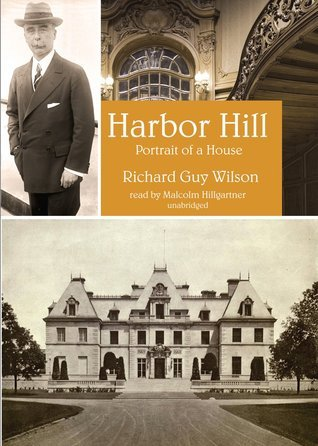Harbor Hill: Portrait of a House by Richard Guy Wilson
Summary (from the publisher): A "palace" ruled by a "queen," Harbor Hill in Roslyn, Long Island, was commissioned by the beautiful and imperious Katherine Duer Mackay, wife of one of the country's wealthiest men. Stanford White, the architect, wrote, "with the exception of Biltmore, I do not think there will be an estate equal to it in the country." The mansion, along with its magnificent furnishings, art, gardens--and the owners' hubris, striving, and ultimate failure--are the dramatis personae of this saga. An extravagant product of the desire for social acceptance, Harbor Hill's story includes elements of farce and tragedy; in a sense it is an American portrait. The portrait encompasses western mining, old versus new wealth, religious differences over the building of a church, and art collecting, as well as the many people involved, from the architects, builders, and workers to the servants and staff who ran the house and gardens.
Review: Harbor Hill was one of the great mansions of the Gilded Age. Built between 1899 and 1902, it was located in Long Island and designed by architect Stanford White under the direction by Katherine Duer Mackay, wife of one of the country's wealthiest men. Lavishly decorated and rivaling the size and opulence of the Biltmore, the home ended up vandalized during World War II before being demolished in 1949.
Intertwined with the history of the house is the family - and the great fortune - behind it. John William Mackay was born to a working-class Irish family. Yet in his lifetime he amassed a great fortune through interest in silver mines, transatlantic cables, and the railroad. After his oldest son died in a horse-riding accident, his younger son eventually inherited his wealth and businesses. It was Clarence who married the "imperious" Katherine Duer, who came from a prominent family but lacked wealth to go along with it. Katherine capitalized on the wealth she married into by attempting to build her way into social acceptance.
I have read multiple Gilded Age histories, including several about different homes from the time period but had never heard of this family or this particular house. I enjoyed learning more about this family and the opulent home they built. I did listen to this as an audio book and kept wondering if I was missing out on any photos that may have been included in the physical text. I would have loved to have seen more pictures as I was reading about the lavish furnishings and grounds of the estate! I also mostly just felt a bit bereft that this mansion was torn down and couldn't have been preserved like others from its time period to serve a monument of its specific moment in history.
Stars: 4



Comments
Post a Comment